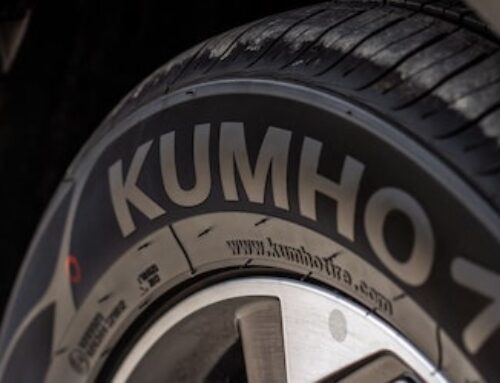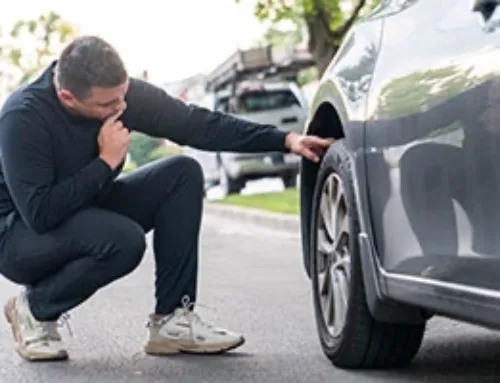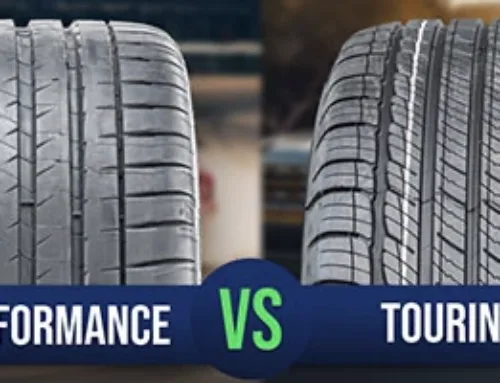Table of Contents
Ok, so you’ve purchased just two tires. Should you mount them on the front or back? As a rule of thumb, you place them across the rear axle of your car. Is everything that simple? No. There are many more factors to consider, especially if your vehicle is equipped with directional tires or you own a 4×4. Read on to get all answers, and don’t forget to ask questions in the comments if you have any.
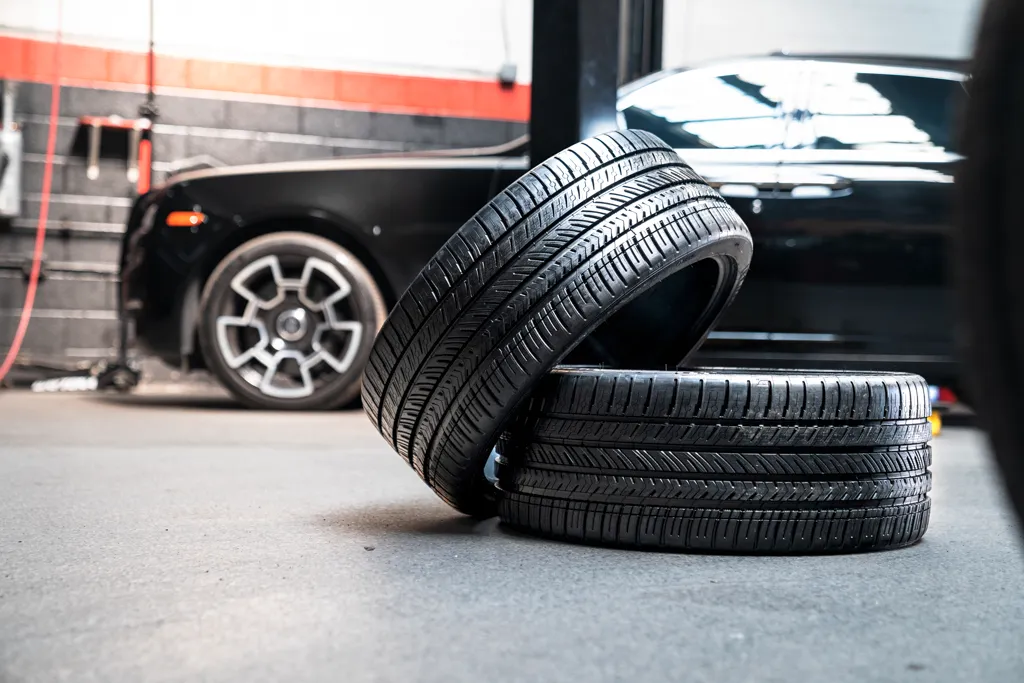
Why do I need to replace just 2 tires?
Sorry to say that, but if you’ve noticed that only two of your tires have significantly worn out, you probably weren’t maintaining your rubber as you should. Front tires always wear faster. Regular tire alignment, air pressure checks, and tire rotation help to even the tread wear and add to the tire’s longevity (and safety).
In addition to tire maintenance, driving style also plays a part in the wear. If you started hearing the unusual rolling sound while driving on a regular surface, this is likely a sign of a need for a tire change. When mounting two new tires, don’t forget to rotate all four, putting the better-worn ones to the front and the new ones to the rear!
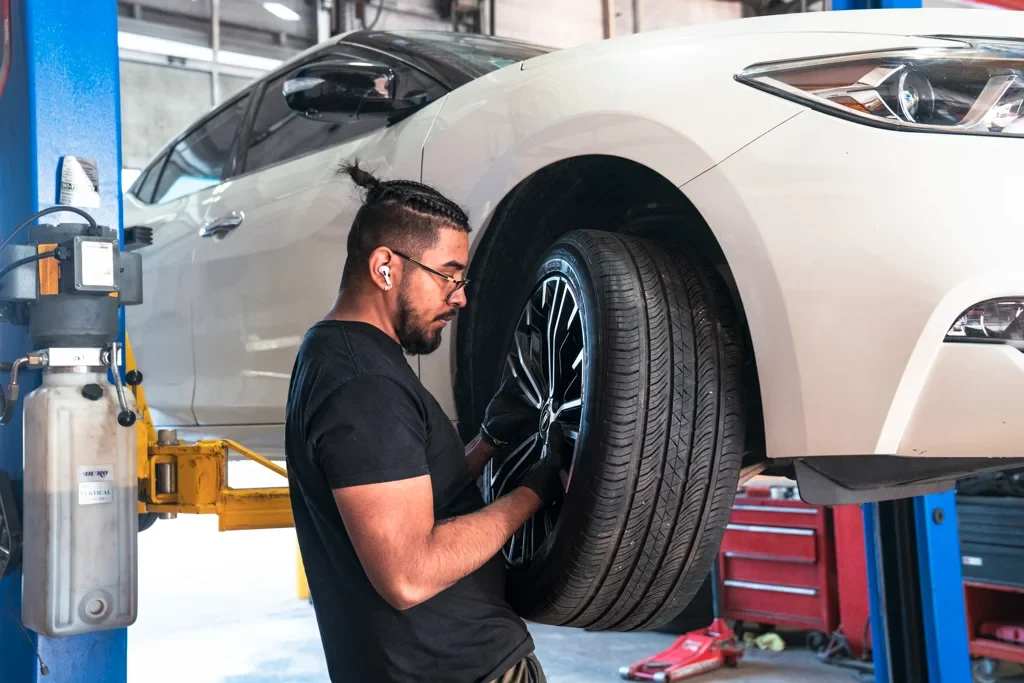
Why, then, the new tires shall—in most cases—go to the back? Because new rubber with the full tread provides optimal traction and prevents aquaplaning. Put it simply? The back of your car won’t skid in the heavy rain. Why the aquaplaning for the front wheels, or the understeer, is less dangerous? Because the vehicle will still tend to move forward with back wheels providing control.
Saying all that, we would like to draw your attention to the details of only two tires installation, as, in fact, it’s not all that simple.
Questions to ask yourself before installing new tires
Here are four questions you should ask yourself when choosing whether to place your new tires on the rear or the front axle:
- Do you have a front or rear-wheel drive car?
- Do your tires have specifications requiring them to be on the front or back axle?
- What conditions will you be driving your vehicle in the most?
- Do your new tires match your old ones?
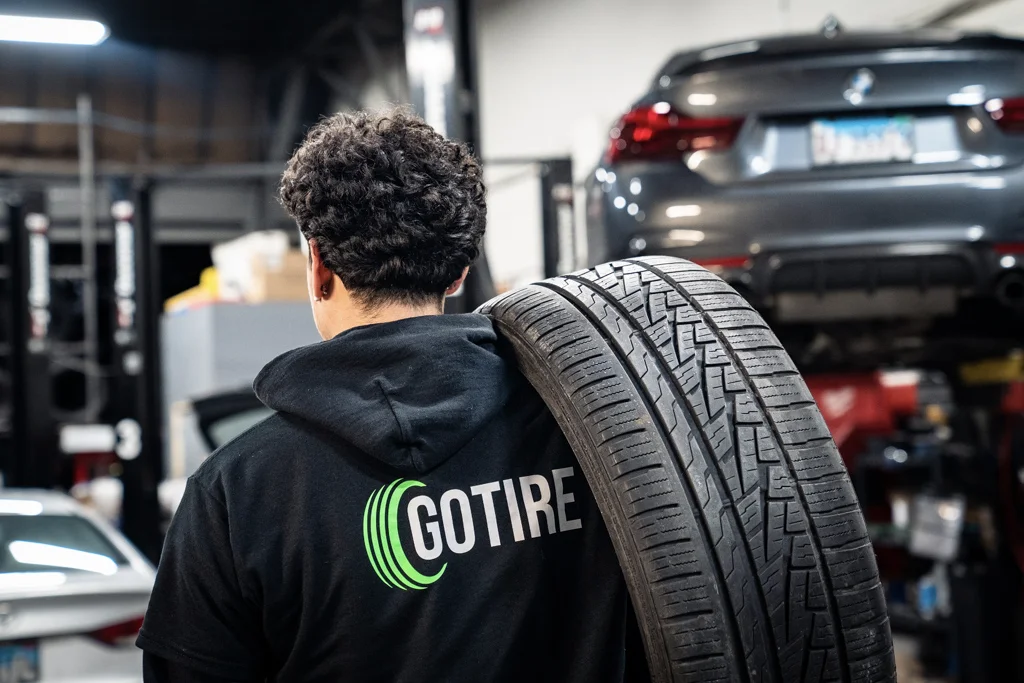
4 factors determining the choice of the front or rear axle
To answer the questions above, you’ll need to consider the following four factors:
- The drivetrain
- The tire type
- The driving conditions
- The brand, model, and size
Let’s take a closer look at each factor to help you determine the best placement.
1. The drivetrain
The type of vehicle you drive is a crucial factor in determining where to place your new tires. In every car, two tires wear faster, depending on the drivetrain. Feel the logic? Front-wheel drive cars are handled differently than rear-wheel drive vehicles. And, as a driver, you are responsible for your safety, as well as your passengers and the other road traffic participants.
Front-wheel drive
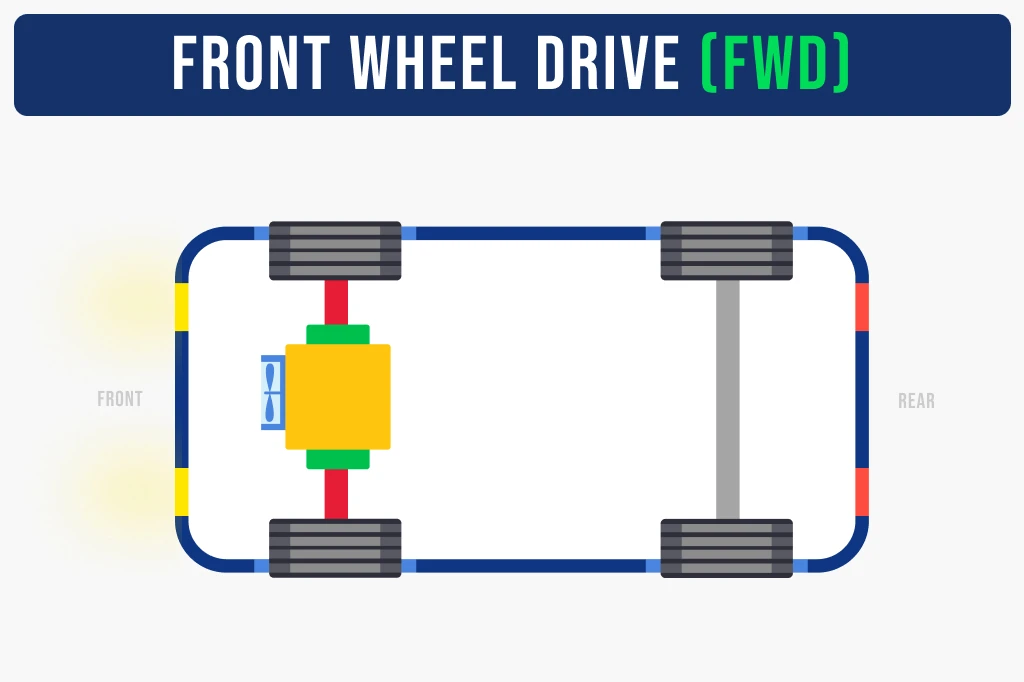
In general, if you have a front-wheel drive car, you should place your new tires in the front of your vehicle. Better tread depth on the front axle will give you greater control.
Why? With front-wheel drive cars, the front tires are responsible for steering and power, while the wheels on the rear are responsible for stability. This means that the front tires will wear down faster.
Don’t let the best tire deals & tips roll by!
Sign up for our newsletter
Rear-wheel drive
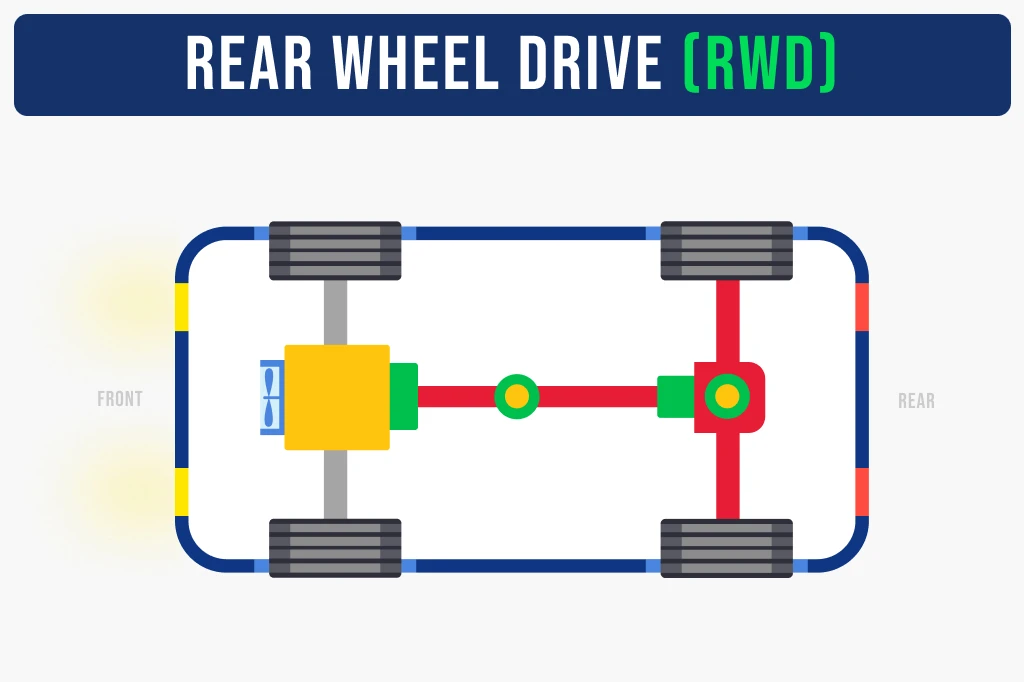
In the case of rear-wheel drive, it’s best to place your new tires on the rear axle. This will provide greater traction at the back and so improve control.
Why? Rear-wheel drive cars rely on the rear tires for acceleration and the front tires for steering. Although the share of wear-and-tear is more evenly distributed between the front and back, we generally find that the rear tires will wear faster and must be replaced more often.
Four-wheel drive
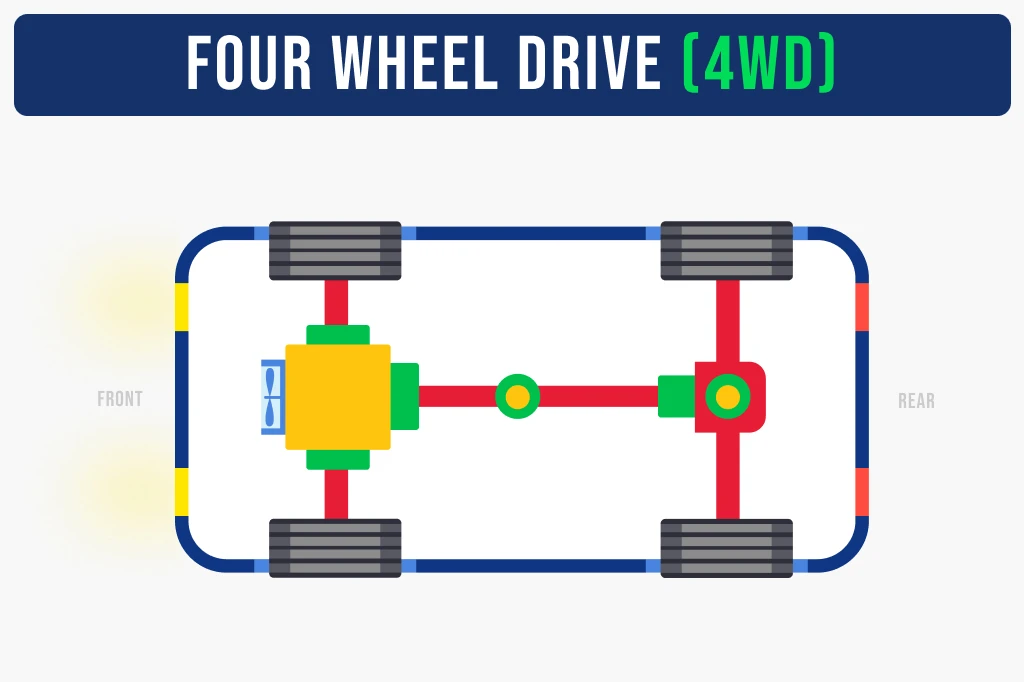
If you have a four-wheel drive car, mechanics will most likely recommend mounting the new tires on the front axle. But this one is close!
Why? The front wheels on a four-wheel drive car do more work than the rear wheels because they are used for steering. With a four-wheel drive vehicle, you also may want to consider other criteria—the tire type and driving conditions.
3. Tire type
We recommend following the tire manufacturer’s specifications before installing tires. You should always put them above any other suggestion in this article.
Some wheels are designed specifically for the front or back of a car, while others can be used on either axle. Here are three common types:
Directional or non-directional tires

Check the manufacturer’s specifications to determine if your tires are directional or non-directional. The tread of the directional tires is designed to rotate in a specific direction. Therefore, directional tires are intended for the wheel to be in either a vehicle’s front or back. On the other hand, non-directional tires can be used on either the front or back of a car.
All-season, winter, and summer tires
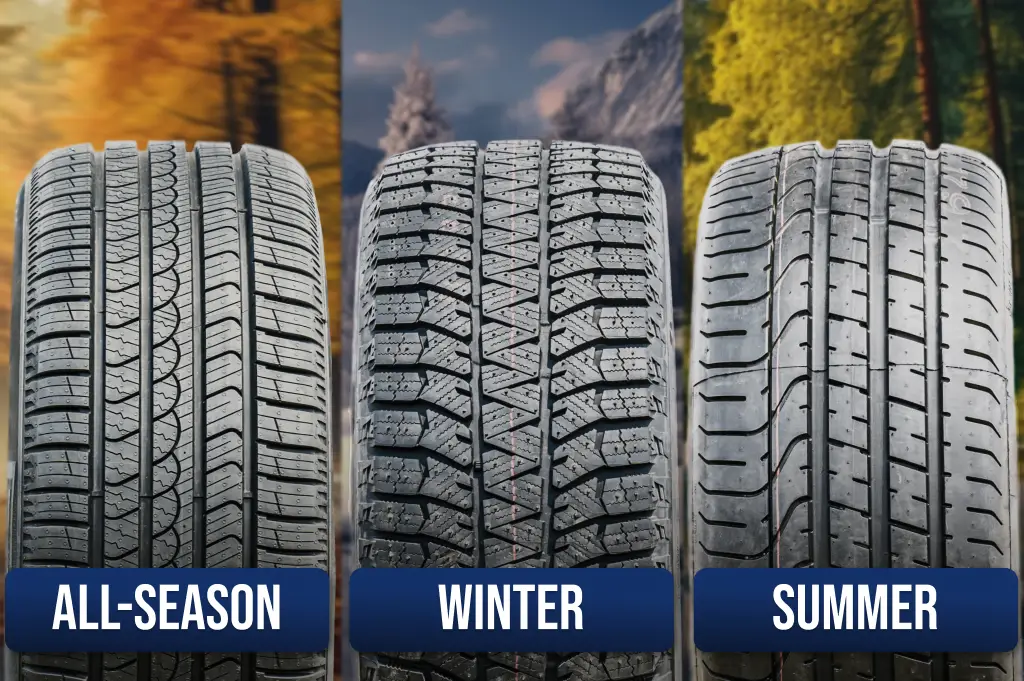
General all-season road tires with no manufacturer specifications can be placed on either the front or the back. If you have these types, you can skip this section. Winter tires, designed for better performance on snow or ice, and summer tires, designed for better performance on heated and wet roads, will likely need to be placed on the rear axle to maintain traction. But have a little patience. We will discuss this further below.
3. Driving conditions

Wet and slippery roads
If you often drive in slippery or wet conditions, you will want to put better and newer tires with deeper treads on the back of your car so you don’t lose traction. This way, the tire will increase the car’s stability and grip by giving better traction on the rear axle. Providing the most tread depth with your tires is key to preventing hydroplaning and ensuring proper traction in standing water.
Snowy surfaces
If you plan to drive in the snow often, it’s best to put your new wheels on the back. Losing traction of the rear axle is a common issue for motorists in snowy conditions. Still, your rear tires provide a lower risk of spinning out and oversteering, and accidents can be greatly reduced.
Dry roads
If you live in a place with a dry climate, you don’t need to worry about this section. Instead, consider your drivetrain, tire type, and brand (size and model).
4. Brand, model, and size

Make sure that the two new tires are the same brand and model as your old ones. This way, they will have the same or similar traction as the same size and design. It is a crucial point. We strictly don’t recommend installing tires of different brands on your car. This puts you, your passengers, and all road traffic participants in great danger.
Before making a purchase, check that your new pair of tires are of the same size, model, and brand as the installed ones. The size difference will affect the tires’ wear. When you install tires of the same size, the tread wear will remain even throughout their lifetime. Also, make sure that you’re purchasing tires with the same load and speed indexes.
Professionals recommend changing all four tires at once!
Though we admit that there are situations when the installation of just two new tires makes sense, we still recommend changing all four tires simultaneously. If you install four tires with the full tread depth, your car will be evenly balanced, the handling sturdy, and the traction and overall driving comfort will increase.
Two worn or partially worn tires can be a dangerous practice. So a complete replacement set of four tires for your vehicle would always be the number one option.
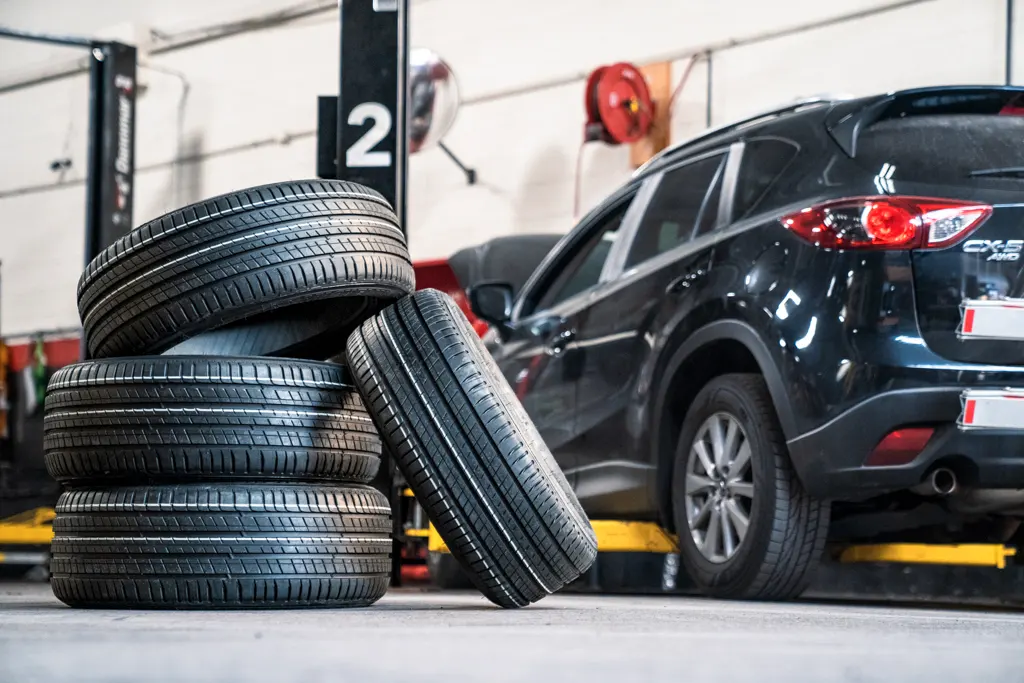
But if you made a decision to buy and install just two replacement tires, match them perfectly, and enjoy the ride. We hope that our Guide cleared up the confusion behind the question, “Should new tires go to the front or back?”. And if you want to know more about extending the lifespan of your tires, read this article.
Frequently Asked Questions
Is it ok to replace 2 tires only?
Yes. However, we highly recommend that you replace the whole set. If you decide to buy just 2 tires, make sure you match them with the already installed ones: the brand, model, and size have to be absolutely the same. Read the article above to determine if the new tires must be mounted to the front or back axle.
Can I install 2 used tires?
Yes, you can, but make sure that they have equal tread wear with the already installed tires.
Do front and back tires need to be the same brand?
Absolutely. The characteristics and the performance of tires by different brands are different, even if they are of the same type, size, load index, and speed rating. You absolutely have to purchase the same-brand replacement tires.
Should I replace front tires or all four?
Better to replace all four. But if you purchase just two tires, whether you mount them to the front or back is determined by many factors. In most cases, placing them on the rear axle is recommended, but there are many exemptions (find out about them in the article above).
Is it OK to have 2 different brand tires?
Absolutely not. We strictly recommend purchasing tires of the same brand if you decide to go for the replacement ones.


